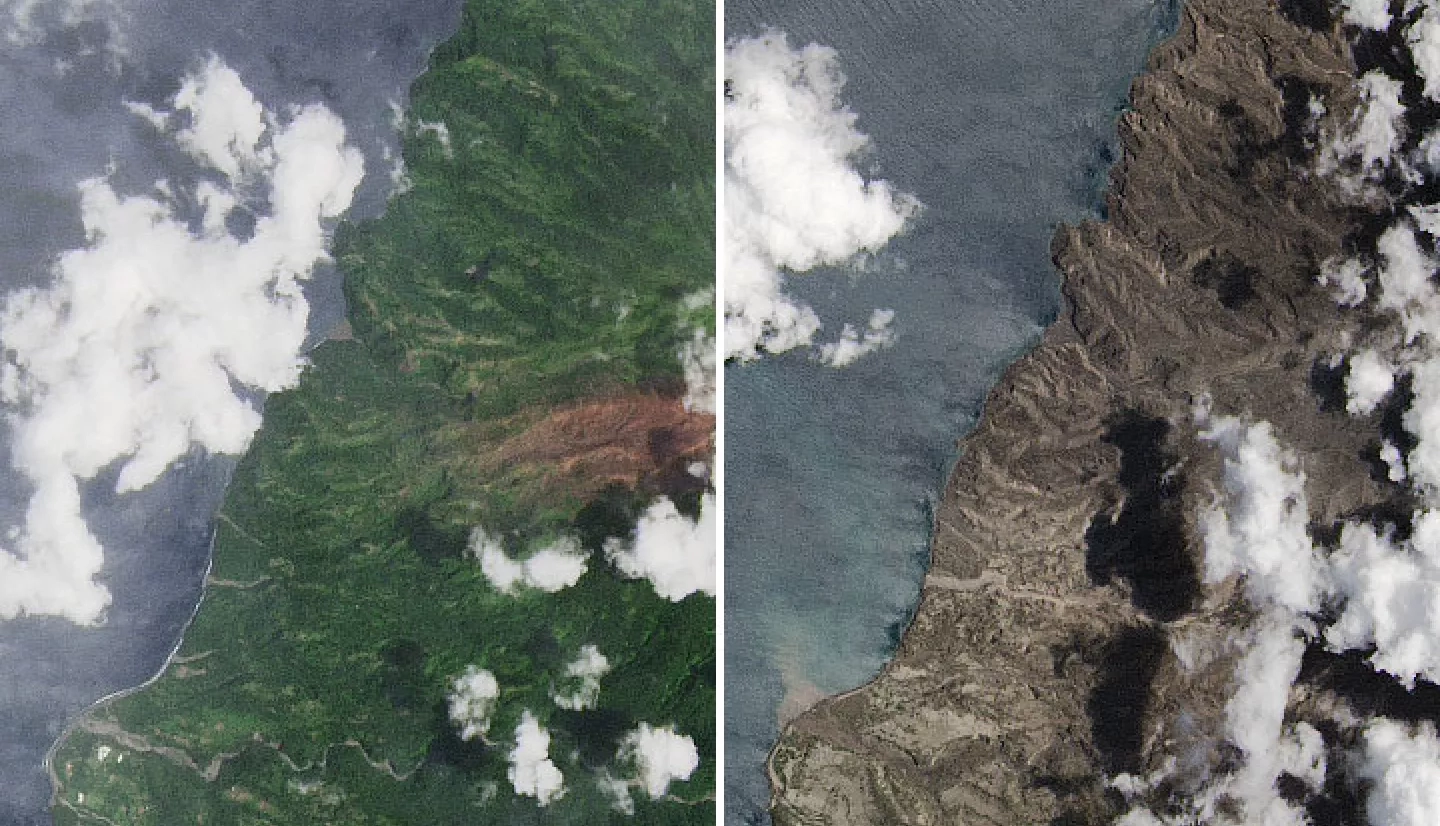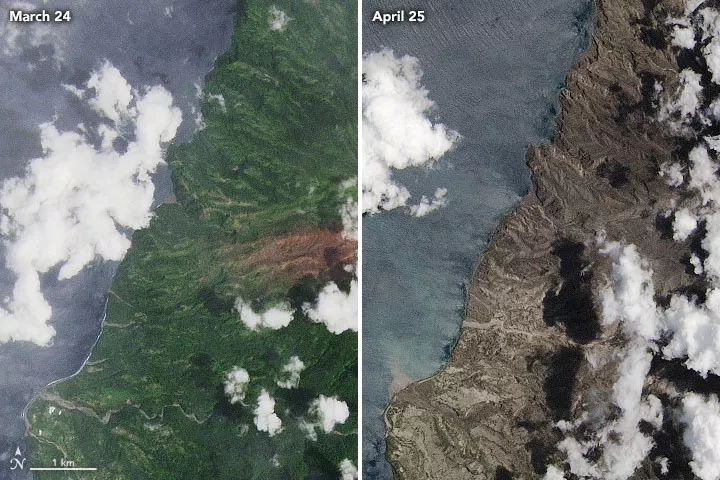Beginning on April 9, 2021, intermittent explosive eruptions from La Soufriére volcano have hurled plumes of ash and gas high into the air above the Caribbean island of Saint Vincent. Although winds have carried some ash plumes great distances, clouds of the tiny pulverized rock and glass shards have also rained down on the island and the Atlantic Ocean.
The fallout has coated large parts of Saint Vincent. The images above, acquired by the Operational Land Imager (OLI) on Landsat 8, show the northwestern part of the island before and after two weeks of powerful eruptions and ashfalls. The brown scar in the vegetation in the image on the left was caused by damage from gases leaked by the volcano before it erupted explosively.
Volcanic ash is quite different than the soft, fluffy material you might find in a fireplace, and the sharp edges and other properties of volcanic particles make them especially problematic. Ash plumes pose a threat to aircraft because the particles can damage jet engines, propellers, and other aircraft systems in ways that can cause them to fail. Roughly ten times denser than snow, ash also can accumulate into heavy layers that can smother crops, collapse roofs, and taint water supplies. When soaked by rain, it can form slurries of muddy debris called lahars that rush down slopes and into valleys. Wet volcanic ash can even conduct electricity, meaning it can trigger short circuits and the failure of some electronic equipment.
The layers of ash that fell on Saint Vincent in April 2021—along with several pyroclastic flows of hot debris rushing down La Soufriére’s slopes—have caused widespread destruction. Most island residents and tourists evacuated the most affected areas in time, but large numbers of buildings were flattened and farms and infrastructure have sustained extensive damage.
Read the full story at NASA Earth Observatory: Rock and Glass Shards Blanket La Soufriére





